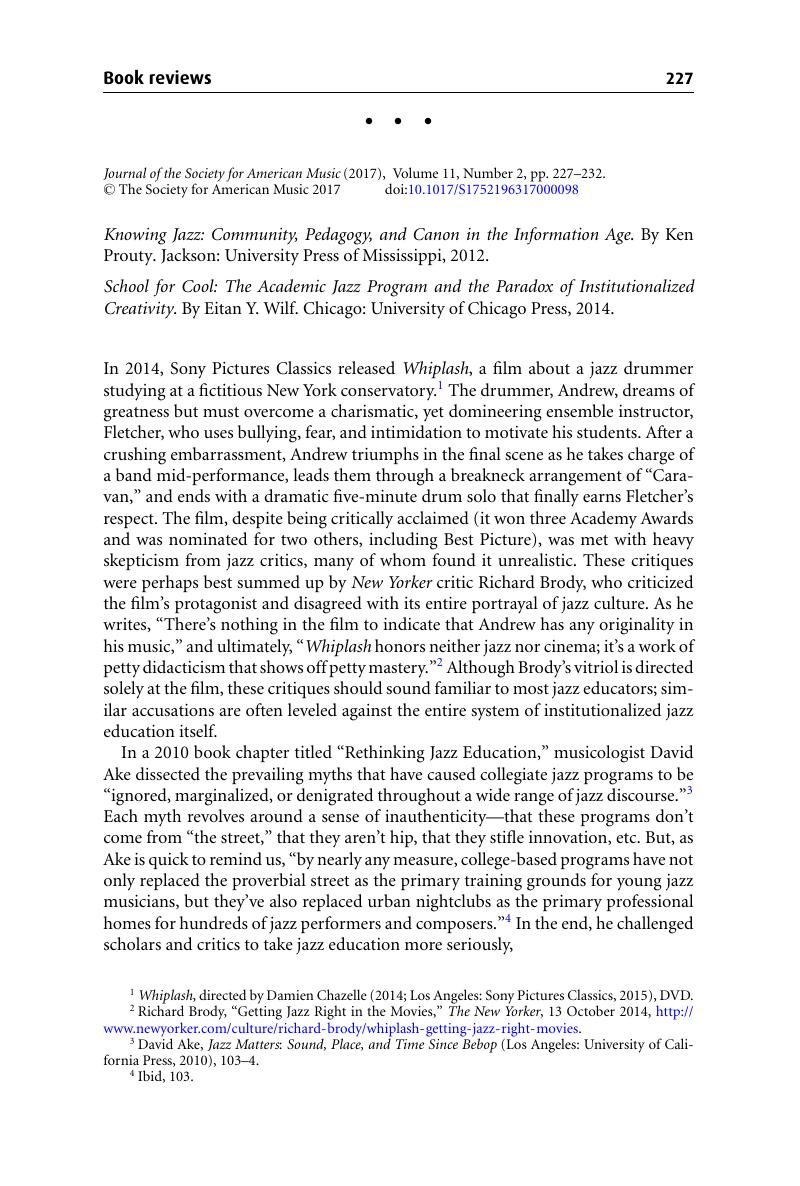No CrossRef data available.
Article contents
Knowing Jazz: Community, Pedagogy, and Canon in the Information Age. By Ken Prouty . Jackson: University Press of Mississippi, 2012. - School for Cool: The Academic Jazz Program and the Paradox of Institutionalized Creativity. By Eitan Y. Wilf . Chicago: University of Chicago Press, 2014.
Published online by Cambridge University Press: 16 May 2017
Abstract

- Type
- Book Review
- Information
- Copyright
- Copyright © The Society for American Music 2017
References
1 Whiplash, directed by Damien Chazelle (2014; Los Angeles: Sony Pictures Classics, 2015), DVD.
2 Richard Brody, “Getting Jazz Right in the Movies,” The New Yorker, 13 October 2014, http://www.newyorker.com/culture/richard-brody/whiplash-getting-jazz-right-movies.
3 Ake, David, Jazz Matters: Sound, Place, and Time Since Bebop (Los Angeles: University of California Press, 2010), 103–4CrossRefGoogle Scholar.
4 Ibid, 103.
5 Ibid, 119.
6 Nettl, Bruno, Heartland Excursions: Ethnomusicological Reflections on Schools of Music (Urbana: University of Illinois Press, 1995)Google Scholar; and Kingsbury, Henry, Music, Talent, and Performance: A Conservatory Cultural System (Philadelphia: Temple University Press, 1988)Google Scholar.
7 Russell, George, The Lydian Chromatic Concept of Tonal Organization: The Art and Science of Tonal Gravity, 4th ed. (New Delhi, India: Concept Publishing, 2001)Google Scholar.
8 Based on George Russell's aforementioned Lydian Chromatic Concept of Tonal Organization, the “chord-scale” theory is a method of teaching jazz improvisation by demonstrating which species of scales are appropriate for any given chord. As mentioned earlier, the method emphasizes moment-to-moment harmonic sonority, rather than large-scale form or melody. This approach is also the basis for educator Jamey Aebersold's popular Play-a-Long pedagogical texts.
9 Nicholson, Stuart, “Teachers Teaching Teachers: Jazz Education,” in Is Jazz Dead? (Or Has it Moved to a New Address) (New York: Routledge, 2005), 99–128 Google Scholar.




